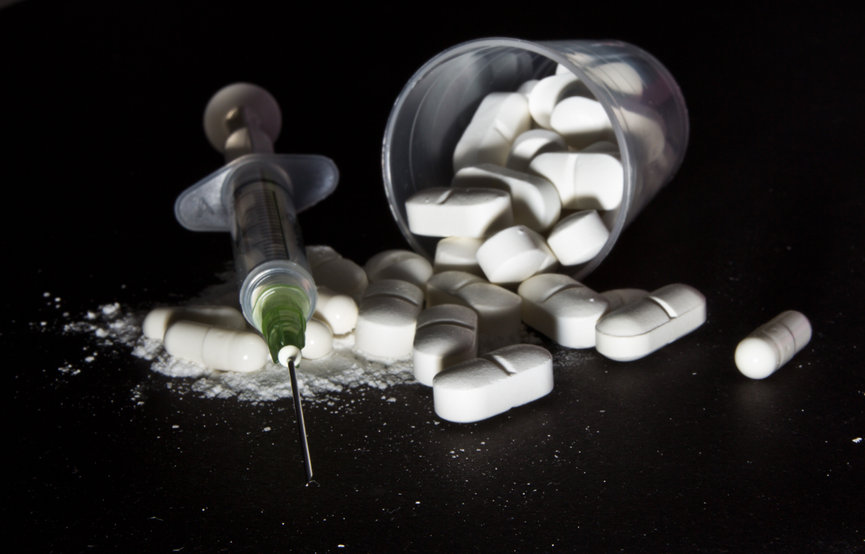
Mr. Foster had a difficult time withdrawing from heroin when he was admitted to the jail 10 days ago on a burglary charge. He was stealing to meet the demands of his 5-bag a day heroin habit. A man-down emergency was just called for his housing unit and you respond and find Mr. Foster unconscious and barely breathing. His cellmate was out in the TV room at the time, and so there are no witnesses. He may have hit his head falling from the upper bunk. The housing officer reports that Mr. Foster returned from a court hearing this morning and seemed in an upbeat mood. You measure his heart rate at 36 beats per minute and his respirations at 9 breaths per minute. He is unresponsive and his pupils are equal and pinpoint. What is going on?
Opiate addiction is powerful. Even after a difficult withdrawal, individuals can be overcome with the desire to return to drug use. Mr. Foster had an opportunity to obtain narcotics while out at his court hearing, and he took advantage of it. Unfortunately, drugs can be obtained in some facilities like these in Florida and Ohio. from both the facility “Black Market” and from staff.
Overdose Suspicion
Correctional nurses need to be suspicious of narcotic overdose any time a patient presents as unconscious with depressed vital signs and pinpoint, equal pupils. Although this patient may have suffered a head injury or stroke, the presentation is suspicious for drug use. Another consideration is hypoglycemia and a fingerstick blood sugar should be obtained. The nurse in this situation should protect the patient’s C-spine in case there was a traumatic fall and follow emergency protocols for reversing the opiate effects.
Overdose Indications
Once the patient is determined to be breathing with a regular heart rate, further evaluation for drug overdose can begin. Here is the classic triad of assessment findings in a narcotic overdose situation:
- Respiratory depression – less than 12 inspirations per minute
- Depressed level of consciousness
- Equal pinpoint pupils (miosis)
Overdose Treatment
Many correctional settings have medically-approved nursing protocols to provide prompt treatment of narcotic overdose. Treatment for Mr. Foster would include:
- Maintaining C-spine protection while establishing an open airway
- Providing ventilation support with oxygen and ambu-bag
- Establishing IV access, if possible
- Administering Naloxone (Narcan): Check protocol but dose range is 0.4 to 2 mg IV, IM, or SQ. Repeat doses, per protocol, may be given every 3-5 minutes until an adequate response is obtained (return to consciousness and improved vital signs).
- Duration of action of Narcan is 20-90 minutes and repeat doses may be necessary until the narcotic leaves the system.
- Prepare the patient for transport to the emergency unit/department for definitive evaluation and stabilization.
- Continuing patient monitoring until care is transferred to emergency services staff.
Note about Body Packing
In a situation like the above, consideration should be given to body packing (storing contraband drugs in body orifices or in the intestines). If the overdose was due to a burst or leaking drug packet in the intestines or rectum, The condition may worsen even after successful treatment. A packing patient is unlikely to be a good historian or implicate themselves in the illegal activity. Alert emergency personnel to the potential for retained drug packet. A simple abdominal x-ray will most often reveal the truth.
Have you had to manage a narcotic overdose in your correctional facility? Share your experiences in the comments section of this post.
Leave a Reply